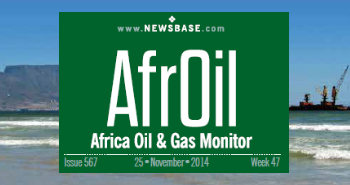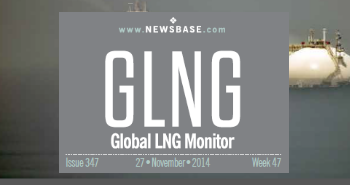South Africa needs clear strategy to avert gas supply crisis, industrial users say

South African Parliament’s Portfolio Committee on Electricity and Energy has discussed measures to address critical gas sector infrastructure, policy and pricing developments with government energy departments and intensive industrial gas users.
The stakeholders agreed that South Africa had only nine months to avert a looming gas supply crisis, or “gas cliff,” Independent Online (IOL) reported on June 5. They urged the policymakers to finalise a fiscal framework, create a gas aggregation platform and facilitate investment decisions to develop liquefied natural gas (LNG) import infrastructure by 2030.
According to the Minister of Mineral and Petroleum Resources Gwede Mantashe, the debate around the gas cliff remains fragmented and the country lacks a cohesive strategy. He highlighted the continued obstacles in developing the gas sector, which have resulted in South Africa relying on imported gas instead of utilising its own resources.
“The court has directed the Central Energy Fund (CEF) to issue regulations to lift the moratorium on shale gas exploration in the Karoo, but progress has been slow,” the minister was quoted by IOL as saying. “We have not succeeded in balancing economics and ecology, which is why we depend on imported gas instead of our own.”
South Africa recently adopted the Gas Master Plan (GMP) aimed at diversifying the country’s domestic and international gas supply sources. The GMP also suggests a systematic integration of gas into its energy mix. As previously reported by NewsBase, South Africa has now offered to buy LNG from the US over a 10-year period.
Importing 75-100mn cubic metres per year of LNG from the US would buy the South African government time to ensure security of supply, compensate for the diminishing imports from Mozambique and facilitate the development of gas-to-power (GtP) infrastructure.
However, Mantashe voiced his frustration that gas supply discussions were mainly focused on LNG imports and repeated the call to prioritise the development of domestic gas resources. “I believe our economic growth trajectory depends on oil and gas exploitation and use. I still want researchers and analysts to prove me wrong on that,” he stated.
According to Craig Morkel, chairperson of the South African Oil and Gas Alliance (SAOGA), South Africa has strong domestic production potential but faces serious obstacles in realising it. He highlighted Namibia’s success in the Orange Basin, which extends to South Africa, where discoveries of 9 billion barrels of oil equivalent (boe) have been made, with production expected to reach 778,000 barrels per day (bpd) by 2035.
“We are in a transition period, and gas-to-power will play a prominent role in the future energy mix, but we are not well-equipped to capitalise on our potential. We have the resources and know the demand, but we are failing to connect the two,” Morkel said.
He pointed out that the only clear progress in local gas development was the Virginia gas fields, which are promising but too small to meet national demand. “We need much better coordination. We have nine months to get this right, based on what we aim to achieve by 2028,” he added.
Jacob Human, CEO of Industrial Gas Users South Africa (IGUA-SA), urged the government to finalise a fiscal guarantees framework so the industry can make urgent infrastructure investments.
Human agreed that the country’s gas sector development strategy was still not practical enough to enable immediate investment. “Industrial users need a clear roadmap with defined actions, timelines, and policy commitments – not further rounds of consultation or vision statements,” he was quoted by IOL as saying.




Follow us online